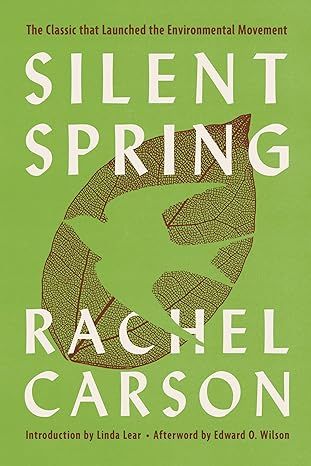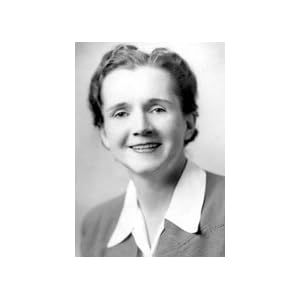Silent Spring
4.6
-
3,594 ratings
THE CLASSIC THAT LAUNCHED THE ENVIRONMENTAL MOVEMENT
“Rachel Carson is a pivotal figure of the twentieth century…people who thought one way before her essential 1962 book Silent Spring thought another way after it.”—Margaret Atwood
Rarely does a single book alter the course of history, but Rachel Carson’s Silent Spring did exactly that. The outcry that followed its publication in 1962 forced the banning of DDT and spurred revolutionary changes in the laws affecting our air, land, and water. Carson’s passionate concern for the future of our planet reverberated powerfully throughout the world. As Carson reminds us, "In nature, nothing exists alone.”
The introduction by the acclaimed biographer Linda Lear, author of Rachel Carson: Witness for Nature, tells the story of Carson’s courageous defense of her truths in the face of a ruthless assault form the chemical industry following the publication of Silent Spring and before her untimely death.
“Wonder and humility are just some of the gifts of Silent Spring. They remind us that we, like all other living creatures, are part of the vast ecosystems of the earth of the earth…this is a book to relish: not for the dark side of human nature, but for the promise of life’s possibility.” —from the Introduction
Kindle
$0.99
Available instantly
Audiobook
$0.00
with membership trial
Hardcover
$21.30
Paperback
$14.39
Ships from
Amazon.com
Payment
Secure transaction
ISBN-10
0618249060
ISBN-13
978-0618249060
Print length
400 pages
Language
English
Publisher
Mariner Books Classics
Publication date
January 31, 2022
Dimensions
5.5 x 0.88 x 8.25 inches
Item weight
12.4 ounces
Product details
ASIN :
B0CYWNWM2K
File size :
3785 KB
Text-to-speech :
Enabled
Screen reader :
Supported
Enhanced typesetting :
Enabled
X-Ray :
Not Enabled
Word wise :
Enabled
Sample
Introduction by Linda Lear
Headlines in the New York Times in July 1962 captured the national sentiment: 'silent Spring is now noisy summer.' In the few months between the New Yorker's serialization of Silent Spring in June and its publication in book form that September, Rachel Carson's alarm touched off a national debate on the use of chemical pesticides, the responsibility of science, and the limits of technological progress. When Carson died barely eighteen months later in the spring of 1964, at the age of fifty-six, she had set in motion a course of events that would result in a ban on the domestic production of DDT and the creation of a grass-roots movement demanding protection of the environment through state and federal regulation. Carson's writing initiated a transformation in the relationship between humans and the natural world and stirred an awakening of public environmental consciousness.
It is hard to remember the cultural climate that greeted Silent Spring and to understand the fury that was launched against its quietly determined author. Carson's thesis that we were subjecting ourselves to slow poisoning by the misuse of chemical pesticides that polluted the environment may seem like common currency now, but in 1962 Silent Spring contained the kernel of social revolution. Carson wrote at a time of new affluence and intense social conformity. The cold war, with its climate of suspicion and intolerance, was at its zenith. The chemical industry, one of the chief beneficiaries of postwar technology, was also one of the chief authors of the nation's prosperity. DDT enabled the conquest of insect pests in agriculture and of ancient insect-borne disease just as surely as the atomic bomb destroyed America's military enemies and dramatically altered the balance of power between humans and nature. The public endowed chemists, at work in their starched white coats in remote laboratories, with almost divine wisdom. The results of their labors were gilded with the presumption of beneficence. In postwar America, science was god, and science was male.
Carson was an outsider who had never been part of the scientific establishment, first because she was a woman but also because her chosen field, biology, was held in low esteem in the nuclear age. Her career path was nontraditional; she had no academic affiliation, no institutional voice. She deliberately wrote for the public rather than for a narrow scientific audience. For anyone else, such independence would have been an enormous detriment. But by the time Silent Spring was published, Carson's outsider status had become a distinct advantage. As the science establishment would discover, it was impossible to dismiss her.
Rachel Carson first discovered nature in the company of her mother, a devotee of the nature study movement. She wandered the banks of the Allegheny River in the pristine village of Springdale, Pennsylvania, just north of Pittsburgh, observing the wildlife and plants around her and particularly curious about the habits of birds.
Her childhood, though isolated by poverty and family turmoil, was not lonely. She loved to read and displayed an obvious talent for writing, publishing her first story in a children's literary magazine at the age of ten. By the time she entered Pennsylvania College for Women (now Chatham College), she had read widely in the English Romantic tradition and had articulated a personal sense of mission, her 'vision splendid.' A dynamic female zoology professor expanded her intellectual horizons by urging her to take the daring step of majoring in biology rather than English. In doing so, Carson discovered that science not only engaged her mind but gave her 'something to write about.' She decided to pursue a career in science, aware that in the 1930s there were few opportunities for women.
Scholarships allowed her to study at Woods Hole Biological Laboratory, where she fell in love with the sea, and at Johns Hopkins University, where she was isolated, one of a handful of women in marine biology. She had no mentors and no money to continue in graduate school after completing an M.A. in zoology in 1932. Along the way she worked as a laboratory assistant in the school of public health, where she was lucky enough to receive some training in experimental genetics. As employment opportunities in science dwindled, she began writing articles about the natural history of Chesapeake Bay for the Baltimore Sun. Although these were years of financial and emotional struggle, Carson realized that she did not have to choose between science and writing, that she had the talent to do both.
From childhood on, Carson was interested in the long history of the earthh, in its patterns and rhythms, its ancient seas, its evolving life forms. She was an ecologist'fascinated by intersections and connections buttttt always aware of the whole'before that perspective was accorded scholarly legitimacy. A fossil shell she found while digging in the hills above the Allegheny as a little girl prompted questions about the creatures of the oceans that had once covered the area. At Johns Hopkins, an experiment with changes in the salinity of water in an eel tank prompted her to study the life cycle of those ancient fish that migrate from continental rivers to the Sargasso Sea. The desire to understand the sea from a nonhuman perspective led to her first book, Under the Sea-Wind, which featured a common sea bird, the sanderling, whose life cycle, driven by ancestral instincts, the rhythms of the tides, and the search for food, involves an arduous journey from Patagonia to the Arctic Circle. From the outset Carson acknowledged her 'kinship with other forms of life' and always wrote to impress that relationship on her readers.
Carson was confronted with the problem of environmental pollution at a formative period in her life. During her adolescence the second wave of the industrial revolution was turning the Pittsburgh area into the iron and steel capital of the Western world. The little town of Springdale, sandwiched between two huge coal-.red electric plants, was transformed into a grimy wasteland, its air fouled by chemical emissions, its river polluted by industrial waste. Carson could not wait to escape. She observed that the captains of industry took no notice of the defilement of her hometown and no responsibility for it. The experience made her forever suspicious of promises of 'better living through chemistry' and of claims that technology would create a progressively brighter future.
In 1936 Carson landed a job as a part-time writer of radio scripts on ocean life for the federal Bureau of Fisheries in Baltimore. By night she wrote freelance articles for the Sun describing the pollution of the oyster beds of the Chesapeake by industrial runoff; she urged changes in oyster seeding and dredging practices and political regulation of the effluents pouring into the bay. She signed her articles 'R. L. Carson," hoping that readers would assume that the writer was male and thus take her science seriously.
A year later Carson became a junior aquatic biologist for the Bureau of Fisheries, one of only two professional women there, and began a slow but steady advance through the ranks of the agency, which became the U.S. Fish and Wildlife Service in 1939. Her literary talents were quickly recognized, and she was assigned to edit other scientists' field reports, a task she turned into an opportunity to broaden her scientific knowledge, deepen her connection with nature, and observe the making of science policy. By 1949 Carson was editor in chief of all the agency's publications, writing her own distinguished series on the new U.S wildlife refuge system and participating in interagency conferences on the latest developments in science and technology.
Her government responsibilities slowed the pace of her own writing. It took her ten years to synthesize the latest research on oceanography, but her perseverance paid off. She became an overnight literary celebrity when The Sea Around Us was first serialized in The New Yorker in 1951. The book won many awards, including the National Book Award for nonfiction, and Carson was elected to the American Academy of Arts and Letters. She was lauded not only for her scientific expertise and synthesis of wide-ranging material but also for her lyrical, poetic voice. The Sea Around Us and its best- selling successor, The Edge of the Sea, made Rachel Carson the foremost science writer in America. She understood that there was a deep need for writers who could report on and interpret the natural world. Readers around the world found comfort in her clear explanations of complex science, her description of the creation of the seas, and her obvious love of the wonders of nature. Hers was a trusted voice in a world riddled by uncertainty.
Whenever she spoke in public, however, she took notice of ominous new trends. "Intoxicated with a sense of his own power," she wrote, '[mankind] seems to be going farther and farther into more experiments for the destruction of himself and his world.' Technology, she feared, was moving on a faster trajectory than mankind's sense of moral responsibility. In 1945 she tried to interest Reader's Digest in the alarming evidence of environmental damage from the widespread use of the new synthetic chemical DDT and other long-lasting agricultural pesticides. By 1957 Carson believed that these chemicals were potentially harmful to the long-term health of the whole biota. The pollution of the environment by the profligate use of toxic chemicals was the ultimate act of human hubris, a product of ignorance and greed that she felt compelled to bear witness against. She insisted that what science conceived and technology made possible must first be judged for its safety and benefit to the 'whole stream of life.' 'there would be no peace for me, she wrote to a friend, 'if I kept silent."
Read more
About the authors
Rachel L. Carson
Rachel Carson (1907-1964) spent most of her professional life as a marine biologist with the U.S. Fish and Wildlife Service. By the late 1950s, she had written three lyrical, popular books about the sea, including the bestselling The Sea Around Us, and had become the most respected science writer in America. She completed Silent Spring against formidable personal odds, and with it shaped a powerful social movement that has altered the course of history.
Read more
Reviews
Customer reviews
4.6 out of 5
3,594 global ratings
Roland Biayaa
5
Earthcare and human love
Reviewed in the United States on May 16, 2024
Verified Purchase
When you awaken your heart to love the Earth to love yourself to love your partner, your children, your loved ones. This is definitely the book that will help open your mind to love.
Midge
5
She addressed abuses in farming that led to problems that could've been avoided.
Reviewed in the United States on May 24, 2024
Verified Purchase
It was great.
Chongyean Cheang
5
An amazing book
Reviewed in the United States on February 12, 2018
Verified Purchase
Silent Spring by Rachel Carson is one book that has opened our minds to how much has gone wrong in the world. It is an immensely powerful scientific book for general readers packed full of verifiable research and data. Rachel Carson wrote the book about the widespread use of chemical pesticides that have wreaked havoc upon the water, the atmosphere, the soil, and the earth since the experiments conducted during World War II. Carson begins the book with a short chapter containing an imaginary scenario of a quiet American countryside in spring devoid of birds and other wildlife. Carson then asks a question which the book attempts to answer: "What has already silenced the voices of spring in many towns in America?" (Carson 1962) The other sixteen chapters fully detail how the use of chemical pesticides and herbicides impacts the environment and silences living species when people do not pay attention. In chapter two she makes the point that humans can alter nature. "The most alarming of all man's assaults upon the environment is the contamination of air, earth, rivers, and sea" (Carson 1962). The author demonstrates that people try to get a quick fix for their small problems but are often unaware of the consequences of their quick fix solutions. "We use the chemicals to kill weeds, insects, and pests…… They should not call insecticides but biocides" (Carson 1962). In the next chapter, "Elixirs of Death," she introduces chemicals which can harm health such as chlorinated hydrocarbons (e.g., DDT), organic phosphates, and other hydrocarbons that are more toxic than DDT such as dieldrin, Aldrin, and endrin. She tells the story of a child and family dog that was suddenly killed by the use on an endrin cockroach spray. When the chemicals are combined with one another, it leads to an unpredictable and harmful result in the atmosphere and living creatures. Carson continues in chapter 4 and five by describing the effect of pesticides in water and soil. Even though low concentrations of insecticide in the water is not detrimental, a habit of putting poison in water builds up and ends up passing into fishes, animals, and humans. DDD and DDE, the toxaphenes used in clear lakes destroy the human adrenal cortex (Carson 1962). Even though the chemicals had been deposited years ago, it was carried on in living species from generation to generation. Similarly, soil can be destroyed if it contains too many pesticides and these chemicals may remain in the ground for an extended period. The following chapter of the book mentioned that there are ways to avoid using insecticides to kill insects such as introducing different species of plants or by introducing plant-eating insects. Carson continues her analysis of the life-threatening consequences of pesticides on the surroundings in chapters 7, 8 and 9. She mentions that the entire population of living creatures, including birds and fish, was killed in sprayed areas. "Aldrin, one of the deadliest of all chemicals, was chosen to kill the Japanese beetles... After a few reports came in of dead birds everywhere…. Dogs and cats sickened" (Carson 1962). The author also provides excerpts of letters from people who lived in the areas saying that these pesticides changed the landscape of the areas in which they lived. One woman reported that the spraying of these chemicals had wiped out robins, chickadees, and cardinals. Other women from Alabama said the result of fire-ant spraying made the birds disappear overnight. Other people in Mississippi saw no land birds for miles after spraying. The author ends the chapter with the question, "Isn't it possible to help the balance of nature without destroying it? Who has the right to decide about the use of chemicals?" Chapter 10 details the death of wildlife when aerial spraying is conducted. She comments on the lack of precaution and foresight being used by the pesticide industry. "No research was done before the launch of million acres aerial campaign" (Carson 1962). It shows the lack of caution and general unawareness of the consequences of their actions. The following chapter examines the evidence that the widespread use of poisonous substances can cause the slow, prolonged destruction of human health. For example, she mentions, "DDT has been found everywhere in processed food and cooked restaurant meals" (Carson 1962). The cumulative effect of using different chemicals is that it is incorporated into our food. It is unpredictable how much it can cause harm. A huge amount of poison is everywhere; people exist in their day-to-day lives without knowing that it is even there. Carson calls it "the age of poison" (Carson 1962). Chapters 12, 13 and 14, Carson directs examines the chemicals harmful to human tissues and organs. Back in the days, we lived in fear of infectious diseases such as smallpox and cholera. Now, we are living with and facing new diseases that Carson calls "the environmental disease." The author gives many examples of the sources of the chemicals and how it reacts and is incorporated into the body. "Dieldrin can have long-term effects such as loss of memory, insomnia, nightmares, and mania" (Carson 1962). At the end of chapter 14, she mentions the statistic that one in every four Americans is developing cancer. The possible explanation is that the sale of chemicals in the market is an accepted part of our lives. She describes how she was slowly dying of cancer as she finished this book. In the next three chapters, Carson describes how insects have developed the ability to reproduce and resist the effects of the sprays. In other words, like the title of Chapter 15 states, "nature fights back." Finally, the final chapter, "The Other Road" presents alternatives to chemical control of pests. Chemical "solutions" should be stopped. Instead, an alternative way is biological solutions based on knowledge of living organisms. She gives examples such as insect sterilization, insect venom as a poison, insect killing microorganisms, and ultrasonic sound to kill mosquito larvae. "The choice, after all, is ours to make" (Carlson 1962). Overall, Silent Spring is all about how the world has changed because of our misguided actions of using harmful chemical pesticides in nature. The book opens our eyes and minds to the fact that these synthetic pesticides have poisoned all living species, destroyed the environment, and contaminated the world. I would recommend this book to all people that are interested in how much the earth is contaminated by humans and want to find a way to help keep the balance of nature without destroying it.
Read more
51 people found this helpful
SEONGJAE KIM
5
[book review] Silent Spring
Reviewed in the United States on March 25, 2024
Verified Purchase
Author of Silent Spring Rachel Carson points out in Chapter 14 that cancer was increasing not only in the general public but also in youth: “The monthly report of the Office of Vital Statistics for July 1959 states that malignant growths, including those of the lymphatic and blood-forming tissues, accounted for 15 percent of the deaths in 1958 compared with only 4 percent in 1900. Judging by the present incidence of the disease, the American Cancer Society estimates that 45,000,000 Americans now living will eventually develop cancer. This means that malignant disease will strike two out of three families (221)”. “Today, more American school children die of cancer than from any other disease. So serious has this situation become that Boston has established the first hospital in the United States devoted exclusively to the treatment of children with cancer. Twelve percent of all deaths in children between the ages of one and fourteen are caused by cancer” (221). Why there were trends of increasing cancer? To answer the question, this paper delves into the 3 causes of cancers mentioned in this chapter - radiation, chemicals, and lack of oxygen for cells. Furthermore, it explores additional important questions it makes us ask. Cancer can be caused by natural sources such as ultraviolet radiation from the sun, radiation from certain rocks, and other similar sources. While Carson admits they are still a factor in producing malignancy, she argues that since these sources have existed for longer than life on Earth and only those who are resistant to them have survived over time, modern-day organisms must have adapted to living with them. In other words, there are likely other reasons for increasing cancer rates besides natural sources. Carson believed that it was especially due to the widespread use of man-made carcinogens in pesticides and insecticides. Compared to natural cancer-causing materials, man-made carcinogens were brand new forms of chemicals that had never existed in the natural environment before, so human beings’ slow biological evolution has not adapted to them yet. Carson not only suggested this logical process but also shared some real-life examples of how humans started to realize that man-made materials can cause cancer. Some of them were due to a lack of knowledge about carcinogens and were somehow inevitable because it was occupational exposure. For instance, in 1775, Sir Percivall Pott declared that scrotal cancer, which was so common among chimney sweeps, must be caused by the soot that accumulated on their bodies. “In the early 1920’s women who painted luminous figures on watch dials swallowed minute amounts of radium by touching the brushes to their lips; in some of these women bone cancers developed after a lapse of 15 or more years. A period of 15 to 30 years or even more has been demonstrated for some cancers caused by occupational exposures to chemical carcinogens” (226). At least these occupational carcinogen exposures were limited to relatively small populations. However, DDT which has produced suspicious liver tumors on animal subjects during laboratory tests and was given the definite rating of a chemical carcinogen by Dr. Huper of the National Cancer Institute, and other insecticides were widely used. Not only the direct exposure to those chemicals are problem but also they don't simply disappear after they're used. They keep following up the food chain, ending up in humans and potentially causing cancer. How do some chemicals cause cancer? German biochemist, Professor Otto Warburg has proposed a persuasive theory. He believes that these chemicals or radiation agents destroy the respiration of normal cells, depriving them of energy. This theory was confirmed in 1953 when other researchers were able to turn normal cells into cancer cells by depriving them of oxygen intermittently over long periods. The impact of these chemicals is not limited to existing organisms; they can also affect unborn babies. This is because babies have rapid cell divisions, making them more vulnerable to the effects of cancer-producing agents that penetrate the placenta and act on the rapidly developing fetal tissues. Dr. W. C. Hueper of the National Cancer Institute has suggested that congenital cancers and cancers in infants may be related to the action of cancer-producing agents to which the mother was exposed during pregnancy. The long latent period of most cancers is the time required for the infinite number of cell divisions during which fermentation gradually increases after the initial damage to respiration. However, since babies are in the process of rapid cell division, they may develop cancer faster when exposed to carcinogens compared to adults. How do we end up surrounded by chemicals that potentially cause cancers to not only living humans but even further unborn babies? Carson wrote - “The chemical agents of cancer have become entrenched in our world in two ways: first, and ironically, through man’s search for a better and easier way of life; second, because the manufacture and sale of such chemicals has become an accepted part of our economy and our way of life” (242). But we can’t just stop developing chemicals to pursue better and easier lives or change our lives back to primitive levels because unsatisfactory is human nature. Then what’s the practical solution? I’ll say regulators with expertise. Just like we are not using toxic chemicals that were used in the past thanks to regulations, regulations should keep monitoring such potential dangers. Therefore regulators must be experts. But this approach isn’t perfect. Moving legislation to phase out the use of such carcinogenic chemicals has been slow which makes “what the public is asked to accept as “safe” today may turn out tomorrow to be extremely dangerous” (224). It's hard to believe that toxic chemicals like DDT were widely used just a few generations ago. However, it's important to consider that similar practices may be occurring today in the world we live in right now. In Professor Handwerk’s words “Now You See It… Now You Don’t.” and we must keep asking what are the DDTs - something harmful but shocking widely used - nowadays. It’s the important question that Carson made us think further about the cause of the cancer.
Read more
2 people found this helpful
Gabby M
4
Clear Science Writing For The Masses
Reviewed in the United States on April 6, 2020
Verified Purchase
The capacity for humans to not think through the ramifications of their choices on the environment and destroy it without meaning to do so inspired Rachel Carson's classic Silent Spring. In it, she traces the links between the rising use of pesticides and insecticides and the devastating consequences it has had for animal life in areas where application is wide-spread. Worse yet, it often doesn't accomplish the desired effect in the long term, which just encourages even heavier use. She doesn't flinch away from the fact that humans are animals, too, and highlights the issues that can arise for the people who live in the often-rural and therefore less-seen communities where these poisons are used most significantly. And since these people frequently eat locally-sourced meat and fish, the problem of biological magnification (animals eating food that has its own level of exposure, compounding with each step up the food chain) becomes even more pressing for them.
Carson writes all of this in strong, clear prose that first explains the concepts she's introducing and then illustrates them with examples of the devastating effects of poisons that are marketed as safe and effective on life, from plants all the way up to people. She doesn't condescend and though her urgency is clear, it doesn't feel alarmist or like a scare tactic. Instead, she presents her case that we need to start paying attention and questioning what we're told rigorously but understandably. Science writing often veers into the esoteric, and this book should be used an exemplar for how to write for the popular market without getting bogged down in details or sidetracked into areas more consequential for the author than the reader.
This book's continuing relevance even after it led to the the ban of DDT, the chemical she primarily discusses, is a result of both Carson's skill as a writer and the impact her work managed to have on the public. Not only did it take DDT off the market, it blazed the path that eventually led to the creation of the Environmental Protection Agency by President Nixon. Imaging a book being so popular and espousing its cause so effectively that it led to the creation of a new federal agency in today's world seems preposterous. All of that being said, this book wasn't an unqualified success for me. After a while, her constant use of examples of a chemical being introduced and the death of wildlife that followed started to feel repetitive, blunting its impact. And I found myself a bit skeptical of the rosiness with which she portrayed the alternative option of importing predators for invasive species control...to the best of my understanding, that can have harmful side effects of its own. All in all, though, this book is readable, relevant, and worth a perusal before you go nuts with the Round-Up on the dandelions.
Read more
17 people found this helpful
Best Sellers
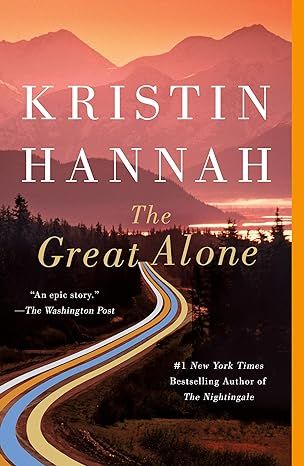
The Great Alone: A Novel
4.6
-
152,447
$5.49

The Four Winds
4.6
-
156,242
$9.99

Winter Garden
4.6
-
72,838
$7.37

The Nightingale: A Novel
4.7
-
309,637
$8.61

Steve Jobs
4.7
-
24,596
$1.78

Iron Flame (The Empyrean, 2)
4.6
-
164,732
$14.99

A Court of Thorns and Roses Paperback Box Set (5 books) (A Court of Thorns and Roses, 9)
4.8
-
26,559
$37.99

Pretty Girls: A Novel
4.3
-
88,539
$3.67
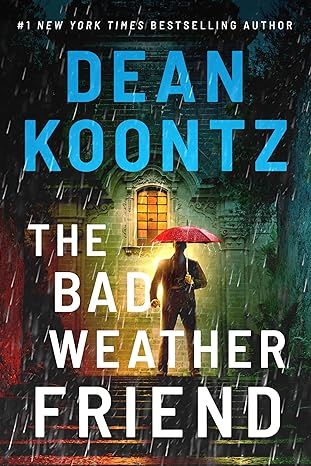
The Bad Weather Friend
4.1
-
34,750
$12.78
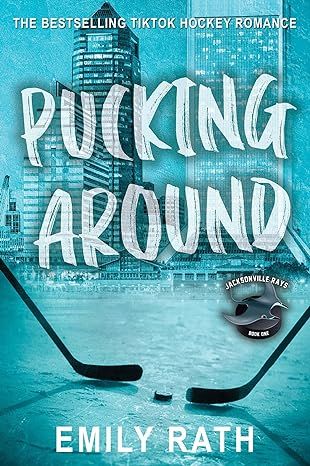
Pucking Around: A Why Choose Hockey Romance (Jacksonville Rays Hockey)
4.3
-
41,599
$14.84
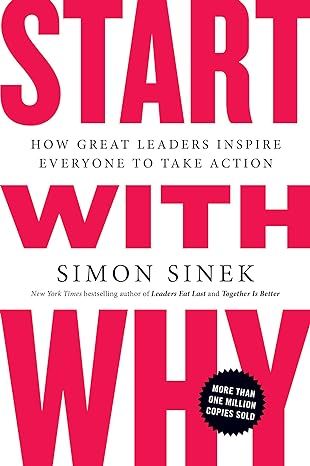
Start with Why: How Great Leaders Inspire Everyone to Take Action
4.6
-
37,152
$9.99
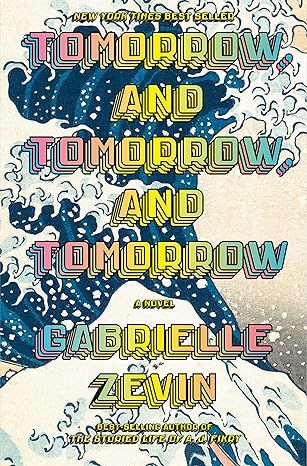
Tomorrow, and Tomorrow, and Tomorrow: A novel
4.4
-
95,875
$13.99

Weyward: A Novel
4.4
-
27,652
$11.99
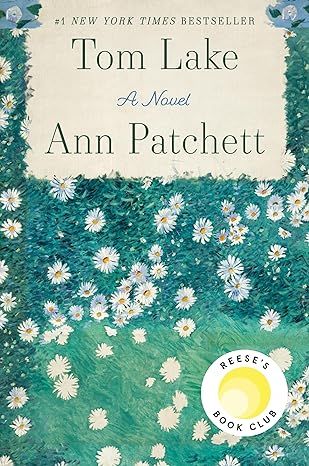
Tom Lake: A Reese's Book Club Pick
4.3
-
37,302
$15.74
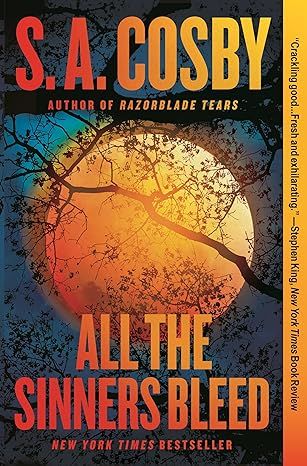
All the Sinners Bleed: A Novel
4.4
-
12,894
$13.55
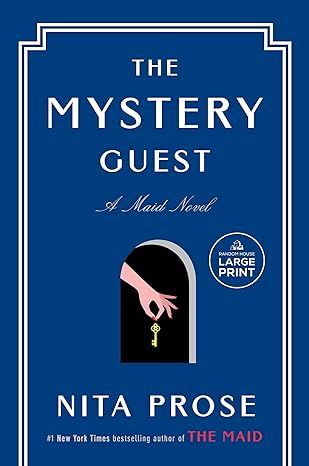
The Mystery Guest: A Maid Novel (Molly the Maid)
4.3
-
9,844
$14.99

Bright Young Women: A Novel
4.2
-
8,485
$14.99
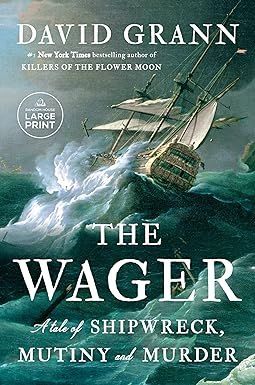
The Wager: A Tale of Shipwreck, Mutiny and Murder (Random House Large Print)
4.5
-
28,672
$14.99
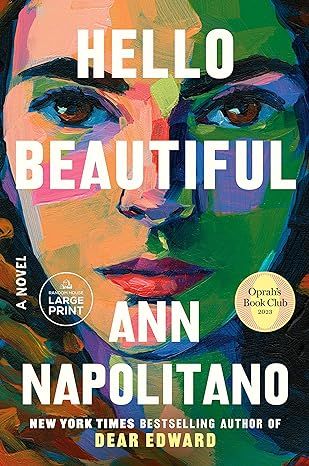
Hello Beautiful (Oprah's Book Club): A Novel (Random House Large Print)
4.4
-
79,390
$14.99
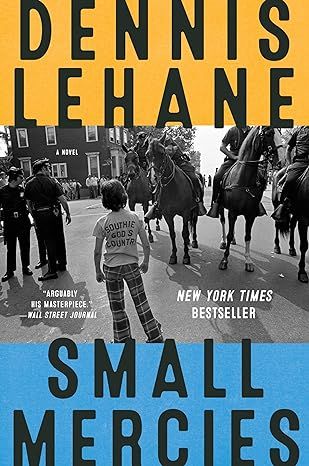
Small Mercies: A Detective Mystery
4.5
-
16,923
$10.00

Holly
4.5
-
31,521
$14.99
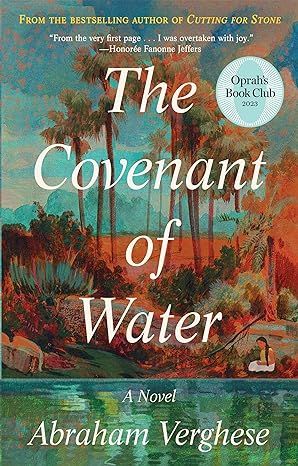
The Covenant of Water (Oprah's Book Club)
4.6
-
69,712
$9.24
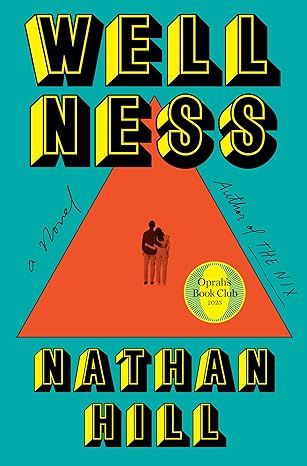
Wellness: A novel
4.1
-
3,708
$14.99
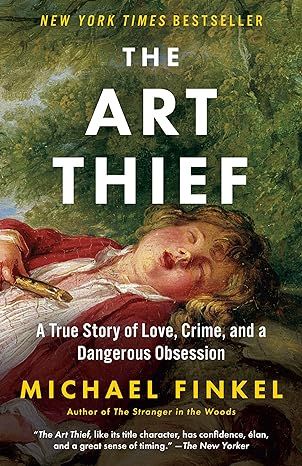
The Art Thief: A True Story of Love, Crime, and a Dangerous Obsession
4.3
-
4,805
$14.99
